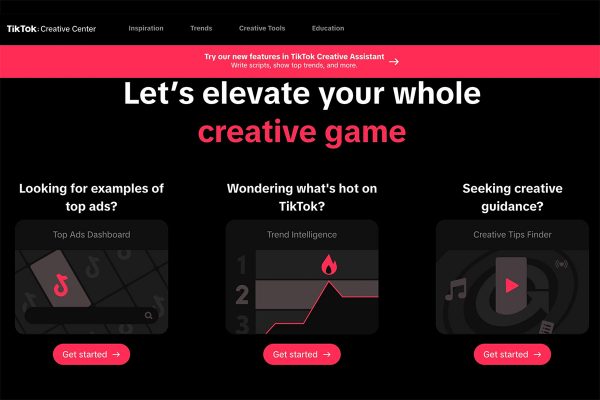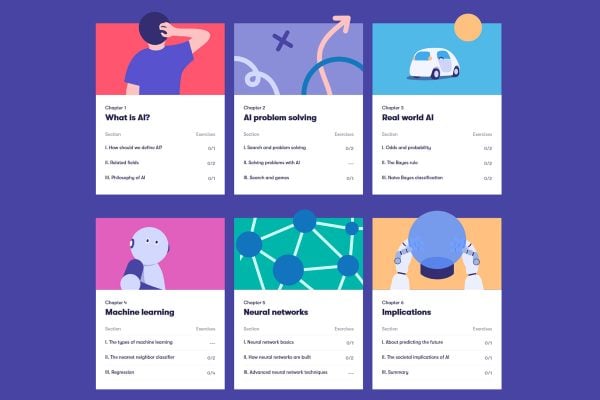Download or read online
This position paper on Artificial Intelligence is available as a free download to read offline at your convenience, or carry on reading below.
Artificial Intelligence
Artificial Intelligence is the theory and development of computer systems able to perform tasks normally requiring human intelligence, such as visual perception, speech recognition, decision-making, and translation between languages.
One of the most interesting aspects of many Artificial Intelligence applications is machine learning – some implementations can learn from past experiences and tailor their future reactions based on what they have learned. For ecommerce this has huge implications for the future including applications as seemingly basic as product recommendations to the possibility of predicting consumer needs and shipping goods before the customer has placed an order.
Our main interest on Tamebay is of course how Artificial Intelligence can be used for online retail, so we’ll start by examining the data available and then consider what type of Artificial Intelligence solutions are available to capitalise on it and either maximise the sales opportunity or save time and be cost effective.
In this article we will examine the need for Artificial Intelligence and explore solutions that are readily available today for both SME and large retailers and brands to implement
Common every day examples of Artificial Intelligence
Today, just about everyone will already have experienced and used Artificial Intelligence. Perhaps the most basic is when you type a query into Google instead of manually picking up an Encyclopaedia. The result may be the same that your query is answered, but in a fraction of the time it would take to research it manually. Google also learns what results previous users preferred and uses this to tailor search results in the future.
Another common application is when you input a destination into your car Satellite Navigation system rather than using a paper map. The best route hasn’t been pre-planned, the system will calculate the best route based on distance, the fastest roads (e.g. a preference for Motorways and A roads), the time of day and historical data on congestion and the best systems will also consider live data from accidents or one-off incidents slowing traffic on the preferred route. All this happens within seconds and a route is planned, but should road conditions change Artificial Intelligence may yet again jump in to inform you and suggest an alternative route.
In theory there is no reason that a human couldn’t perform many of the functions that Artificial Intelligence performs, but it could take days, months, or even years of man hours to complete one task that Artificial Intelligence powered computers can perform in a fraction of a second.
Retailers and Customer Data
Go back a century and retailers would know their customers by name. They’d know what they would routinely purchase, and payments would be in cash. The in-depth customer knowledge came from a relatively static customer base as travel was restricted to consumers would shop with local retailers in the town or village that they lived.
Today larger high street retailers don’t have the same relationship with their customers – scale simply doesn’t allow it when hundreds or thousands of customers visit a single store each day. The conundrum retailers need to solve are how to market to an itinerant customer who may be a loyal shopper with the retailer visiting multiple branches over the course of a year, yet the only data captured is the consumers bank card number at the point of payment. Therefore, many retailers offer loyalty or membership schemes or attempt to capture contact details, often with the promise of discounts or warranties, to enable future marketing.
Online Retailers and Big Data
Online, retailers have a very different view of their customers. They still get to see the payment but now it is tied to a specific customer and the consumer voluntarily reveals their name, physical address, email address and possibly sex and age as part of the transaction process. For some purchases other information is shared for example when purchasing apparel and footware the consumer by default shares their physical size and body shape. In addition, a raft of additional data surrounding the transaction is captured through website analytics such as:
- Traffic source – What was the previous site the consumer visited? Did they come from an Internet search engine, a shopping comparison site, a direct typed URL, a social media link, clicking on an online advert or from a specific website.
- Search terms – Analytics will capture both any search terms entered leading the consumer to land on the site as well as any search terms entered once on the site.
- Traffic Paths – Retailers know exactly what pages and products customers visited whilst on their site. There may be star products or promotions which attract traffic but may not end up being purchased on that visit or indeed alternative products may end up being purchased
- Abandoned Carts – By examining the point in a process that a cart is abandoned retailers can identify barriers to purchases
- Reviews and Social – Retailers also get to see social signals both prior to and after purchase which can be used to identify customer service issues or for further product promotion.
There are of course many more touch points along the purchasing path, for instance we’ve not touched on services such as shopping comparison sites and paid search or other advertising which, whilst they may not be the final click, could be sales assists when consumers are researching products before they even visit your website.
The need for Artificial Intelligence in online retail
With the absolute deluge of information which can be collected from a single customer buying a single product, retailers simply don’t have the time to manually review the information to learn about their customers.
Indeed, data on any single customer isn’t generally very interesting in isolation when you have thousands of customer visits per day, some who make a purchase and some who don’t. When the data becomes interesting is when we collate the information from thousands of customer’s purchasing journeys the analysis can reveal insights to optimise the shopping journey and when we can take immediate actions to personalise the buying process for an individual customer.
This is where Artificial Intelligence comes to the fore as technology can easily identify trends and opportunities a human would miss and automatically trigger processes to tailor the shopping experience for a customer, or equally target marketing to anonymous shoppers elsewhere on the Internet to tempt them back to compete a purchase.
Artificial Intelligence and Online Retail Applications
Multichannel Management Solutions
Most online retailers that opt to sell on multiple channels will automatically consider one of the many multichannel management solutions available. You’ll find solutions suitable for all businesses from the very smallest to the largest retailers.
Multichannel managements solutions can carry out a vast array of processes but the most basic is the ability to manage stock across multiple sites and when an item sells, reducing the quantity available on every other site.
More complex stock management will also manage product bundles where multiple SKUs may be sold individually or with the addition of other SKUs as a bundled product kit. This is more complex as the kit can only be sold if all the SKUs required are in stock and the same SKUs could form parts of multiple kits all being sold on multiple sites. Of course, the management of stock for bundles and kits could be performed manually but the Internet operates 24 hours a day and with hundreds of products Artificial Intelligence is the obvious solution.
This is a very brief overview of just one feature of multichannel management solutions, other features include automated printing of orders, picking and packing lists and shipping labels, translation, carrier management and warehouse management solutions.
Repricers
Repricing technology is often built into multichannel management solutions but is also available as a standalone solution.
Repricers are Artificial Intelligence solutions which monitor product sale prices on the Internet, often on marketplaces, and automatically adjust your selling prices to keep them competitive and retain margin.
This solution sounds simple, but repricers can also consider factors such as seller reputation, stock availability and even if a competitor is using services such as Fulfilment by Amazon as an indicator of what sale price will win the Amazon Buy Box.
Repricing can monitor hundreds of factors with the aim to maximise sales whilst retaining the highest margins possible in the process.
Analytics and forecasting
Many retailers in the past made purchasing decisions based on little more than experience and a gut feeling for what will sell successfully. Today solutions are available which can examine historical prices and sales history and provide the data required for more rigid forecasting. Solutions vary from making historical data available for analysis to solutions which can highlight opportunities based on stock shortages and availability.
Personalisation and recommendations
The aim of personalisation is to infer details of the type of product a shopper may be interested from what we know about them and what we know about previous customers who showed similar interests.
At it’s most basic level, if we know 100 customers that purchased product A also went on to purchase product B, then we can cross sell product B to the next customer that adds product A to their shopping basket. This is a relatively simplistic view of what Artificial Intelligence can perform, a machine can consider thousands of factors such as browsing history, purchase history, time, location and even data such as whether the user is browsing from an Android or iPhone. All these and thousands more touchpoints can be analysed and acted on by Artificial Intelligence to personalise the shopping experience.
Chatbots
Many times, during the shopping journey a customer may need to ask a question before they complete a purchase but the prospect of communicating with thousands of customers is prohibitively expensive. However Artificial Intelligence can power Chat Bots which can answer many customer queries automatically without the need for human input.
Chat Bots can convincingly simulate how a human would behave as a conversational partner and their use is increasingly becoming customary to consumers as they interact with Virtual Assistants in their homes.
Order Updates
One common use case for Chat Bots is to make order updates easily available at any time during and after the purchase process. This can be an on-demand process on your website, but Artificial Intelligence has made the ability to actively push notifications out to customers through a variety of mediums including through Virtual Assistants (many carriers have already built integrations) and even through services such as Facebook Messenger.
Millennials are just as receptive to communicating through chat services and in some cases more so then they are to email and we only have to look to the East to see the future with WeChat and the extent to which it is used in China.
Retargetting
Even when a shopper leaves your website without making a purchase, Artificial Intelligence can be used to retarget them when visiting other sites on the web with various ad formats. For instance if you’ve recently visited a retailers website you may well have seen an advert from that retailer for the product or service you looked at the next time you visit Facebook.
Artificial Intelligence can decide which consumers to target and whether to re-advertise the product to prompt a sale or if a discounted offer would be more appropriate. Equally for customers for whom you have contact data email special offers could be triggered.
Localisation
Artificial Intelligence can perform many tasks both in segmentation and translation of language and prices to localise the shopping experience for overseas customers. Today, there are even services such as Google Translate for bilingual translation on the fly to enable customer support.
Image Search
Machine Learning and Artificial Intelligence can tag and label images to enable new ways to search. Both eBay and Amazon already offer different forms of Image Search.
“With AI, we can infer information based exclusively on visual cues like colour and design [in product images], which helps us better understand the inventory on our platform and, in turn, provide clearer options to our customers”
– Devin Wenig, eBay CEO
Artificial Intelligence can not only analyse images to enable visual search, but can also be used to increase the effectiveness of text search by inferring details of the image and either comparing features to those already in the product database with similar attributes or by seeking similar images.
Structured Data
It’s important to realise that Artificial Intelligence and Machine Learning can be made much more effective if they have vast quantities of data made available. In the past it was sufficient to write an enticing description designed for humans to read but this is less effective for machines.
Machines devour data when it’s structured, so for instance instead of describing a “Size 10 black knee length dress”, the Artificial Intelligence that powers search across the web will better understand a markup schema such as “Product: Dress; Colour: Black; Size: 10; Style: Knee Length”.
Different marketplaces will call structured data by various names such as product data, product identifiers, item specifics and services such as Smart Search from GS1 are available to implement structured data on your own website.
Virtual Assistants and Voice Search
It would be remiss of us to ignore the rise of the Virtual Assistant and voice search which we discussed in a previous article. The proliferation of Virtual Assistants have increased the use of voice search over the past few years and this will impact the manner in which you write content in the future.
User will use conversational language when talking to a machine using “Who, What, Where , When, Why and How” questions so whilst it’s important to include structured data in a markup schema language which Artificial Intelligence can devour, your descriptions for humans to read will benefit your SEO efforts if they explicitly include question and answer type bullet points that you potential customers my search for.
Implementing Artificial Intelligence on your Website
It may seem a daunting prospect to consider implementing Artificial Intelligence on your own website, but today many solutions are available as add on plugins for common ecommerce platforms.
Shopify have an entire App Store with solutions for everything from chatbots and retargetting to apps which will automatically push order update to Facebook Messenger.
Similarly, Magento have thousands of Magento extensions available today which can apply Artificial Intelligence solutions to your Magento shop.
Whether you sell on your own webshop, marketplaces or other ecommerce platforms across the web, the use of Artificial Intelligence is not just desirable and profitable, but essential in today’s world. We may not be able to provide the individual personalised experience of the village shop keeper of yesteryear, but we can still offer a personalised shopping experience using Artificial Intelligence today.









